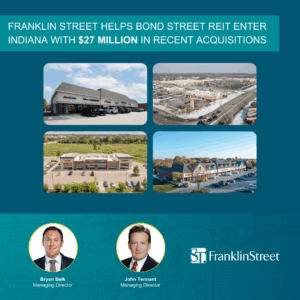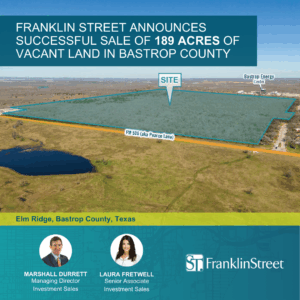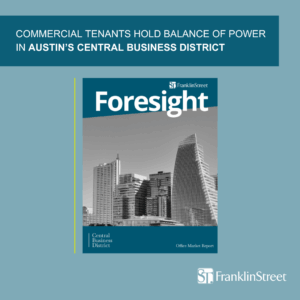With job and residential growth fueling opportunities and underlying economic growth increasing consumer spending, the current retail performance in Florida’s major markets is strong – and, for certain markets and property types, it has never been better.
“The downturn saw negative reversed itself,” says Ivy Greaner, executive vice president of Lennar Commercial. “Investment, leasing and development are strong in major metro markets throughout Florida, as companies with capital are looking for the strongest performing markets and retailers want to capitalize on the maximum amount of dollars with the least amount of risk.”
Overall, leasing and development are getting stronger around the state. Leading the packin leasing are the restaurant, health, beauty, wellness, and fitness categories, followed by grocery-anchored centers, according to Ron Wheeler, CEO of The Sembler Co. “Most of the major markets in Florida are seeing the highest occupancy levels in years,” he says.
So how does Florida retail compare to the rest of the United States? “United Trust Fund buys corporate real estate throughout the U.S., and Florida currently mirrors the rest of the country in that there is tremendous competition for sale-leasebacks,” says Paul Domb, asset management at United Trust Fund. “The net effect of the current market is that companies are demanding and achieving shorter-term leases, lower cap rates and are generally looking for maximum sale proceeds.”
Southeast Real Estate Business will take a closer look at what’s happening in retail in Florida’s four major markets: Miami, Tampa Bay, Orlando and Jacksonville.
Miami
According to Wheeler, the best area in the state for retail right now is urban infill in Southeast Florida, driven primarily by population growth and a staedy economy.
Marc Yavinsky, executive vice president at Menin Development, agrees. “I would say population growth would be the No. 1 driver of retail in Southeast Florida,” he says. “High-quality locations have little to no vacancy right now and garner the highest rents, and infill properties are incredibly hot right now.”
Paco Diaz, senior vice president of CBRE, agrees that Miami is a tight market, given that vacancy is currently 3.5 percent. “I’ve been in this business for 30 years, and I’ve never seen it like this,” says Diaz.
In terms of high-street retail, Michael Comras, president and CEO of The Comras Co., points to Lincoln Road in South Beach as one of the top five retail streets in the world, as it continues to draw national retailers like Apple and Nike, which was recently approved to build a new 30,000-square-foot flagship store.
Miami’s Design District continues to attract big-name brands as well. As a result, rents in the area have gone up significantly in the past few years, pricing some of the current tenants out.
Seeing potential to draw tenants looking for a new home just south of the Design District, Comras Co. is currently working with The Mack Group on a mixed-use project called District 36 located below the I-195 bridge at the border of Midtown.
“Our positioning of this project being right by the Design District and up against I-195 with amazing exposure is attractive to these home furnishing stores,” says Comras.
The project, which recently broke ground, will feature 50,000 square feet of retail on two levels. “The design was inspired by the High Line in New York and its use of negative space under the elevated railway,” says Comras. The city of Miami owns the rights to the I-195 underpass and is in the RFP process to have a designer come in and reimagine the space.
Other emerging hot markets, according to Comras, include Coconut Grove, which he calls an untapped market. “Coconut Grove is re-emerging. Pinecrest, Coral Gables, Key Biscayne – they have the best year-round demographics.”
Joe Gallaher, an associate at NAI Miami, also sees the potential in Coconut Grove. “While the rising retail tides are most apparent in the core markets of Aventura, Brickell, Doral, South Beach and Coral Gables, the overflow effects are also felt in Miami Lakes, North Miami and Coconut Grove,” says Gallaher. “The Grove has the highest likelihood of seeing the most dramatic increase in activity despite having a higher-than-average vacancy rate due to its proximity to the hot markets and because of its pedestrian-friendly layout, bayfront views and cultural charm.”
After several years of scare development, large-scale ground-up projects are on the rise again in South Florida. There are a few large developments on the books with Brickell City Centre, Miami Worldcenter, American Dream Miami, Fashion Mall, Metropica, and the Sawgrass Mills expansion.
“After a void of new development, there are plenty of new opportunities for retailers to expand,” says Beth Azor, founder and owner of Azor Advisory Services. “As far as investment sales goes, Publix Supermarkets continues to be one of the top purchasers of shopping centers, and fast casual restaurants continue to lead the pack in leasing space.”
Looking forward, continued population growth, consumer demand and foreign investor interest will fuel retail both in the hot infill locations and out into high-potential suburban markets and gentrifying urban areas.
“You’re going to continue to see foreign capital and independent national companies come into Miami,” says Emran Ally, vice president at CBRE. “Wynwood Arts District and Design District, everyone knows about those markets. The Biscayne Corridor will be the next glamorous place to be.”
Tampa Bay
Moving up the Gulf of Mexico side of the state, the Tampa Bay area is seeing overall improvement in its retail market. Rents are going up, and vacancies are diminishing, according to Paul Rutledge, first vice president with CBRE. “Rates are going up at a measured pace and moving in the right way.”
Looking more closely at what’s performing well and what’s struggling, the market is experiencing what RMC Property Group calls a tale of two cities.
“We have some properties in very infill locations at Main and Main, and it’s never been better both financially and with tenants looking to get into the property,” says Bobby Egleston, RMC’s chief financial officer an chief real estate office. “There is a substantial amount of investor interest in single-tenant drive by a low-interest rate environment. High-net worth individuals are looking to get some yield, so they are buying NNN properties with no management need.”
“The market is vibrant for free-standing infill properties, led by the gas station and convenience group,” adds Bill Eshenbaugh of Eshenbaugh Land Co.
Additionally, fast-casual restaurants are coming in and performing well, and big boxes that have been sitting on the sidelines for a while are coming in and choosing the right location. “All of these things are driving demand and pushing rents,” says Chris Stewart, director of leasing for RMC.
In the tertiary markets, on the other hand, there has not been much improvement since the downturn. What is happening, though, is certain businesses that performed well during the recession, such as discount retailers, are continuing to see success.
“There’s not the negative association about shopping at a discount location like there used to be,” says Rutledge. “Retailers like Dollar Tree are moving into freestanding locations. The stigma of going to Dollar General or Walmart isn’t there anymore. It’s a change in the mentality.”
Another change in mentality is that more non-traditional retailers, like fitness centers and medical offices, are taking shopping center space. “It’s adding another use for landlords backfill space,” says Stewart. “This is a huge change in mindset for landlords gravitating toward non-traditional.”
While ground-up development is still lagging, there are new developments coming on line in the way of grocery-anchored centers, especially Publix, and a few mall projects have broken ground north of Tampa in the Wesley Chapel area. One of the projects is Simon Property Group’s 441,000-square-foot Tampa Premium Outlets.
“That’s a huge game-changer in that area,” says Rutledge. “It gives them a value proposition for that market. That’s going to transition the top part of Hillsborough County into a retail hub.”
Hot markets in Tampa Bay, according to Rutledge, are Pasco County and Manatee County. Additionally, a $1 billion redevelopment plan has been announced for downtown Tampa that could generate significant change.
“Coming out of the recession, there were two areas, Pasco County and Manatee County, that had real value propositions,” says Rutledge. “That has pushed the market from Tampa core all the way down south to Sarasota. It’s getting a homogeneous feel from top to bottom. What we’re seeing now is that the market is producing new product because of demand. There’s elasticity to the market.”
Egleston predicts that with so much on the docket, the market won’t experience any negative trends in the future. “At the moment, everything looks positive,” says Egleston. “We’ll have a better gauge of the next 12 months after the holiday season and sales.”
With a dynamic real estate market and positive retail business, Orlando has become one of the fastest growing metropolitan areas in the U.S., according to Sean Glickman, managing director for Glickman Retail Group, Retail Investment Advisory at Coldwell Banker Commercial.
“retail has definitely come back from the low of 2009 through 2011,” agrees James Mitchell, senior vice president of brokerage retail services at CBRE. “That has followed single-family residential coming back. It’s hot.”
For 2015, one of the most significant construction projects in Orlando is The Shopping Center Group’s $100 million Lee Vista Promenade, Glickman says. Additionally, a Walmart regional power center has been planned and a proposal for the expansion of Orlando Fashion Square is under consideration, he says.
In terms of strong performers, net lease properties are at the top of the list. “Net lease retail such as drug store, banks, fast food restaurants are performing best,” says Glickman. “Net lease retail and Publix-anchored centers are fetching the highest price-per-square-foot. Tertiary markets are experiencing challenges, and Class B and C strip centers and mom and pop tenants are hard to sell and hard to finance.”
Like in Tampa, this divide makes Orlando a tale of two cities. “The urban, infill markets like Winter Park and suburban areas like Lake Nona are very hot for retail and are a landlord’s market,” says Mitchell. “There’s just not a lot of available space. Deland and Daytona are struggling because housing hasn’t come back yet. In those areas landlords are offering concessions to bring retailers in.”
Looking toward the city center, the focus for the Downtown Development Board is to build up stronger demand drivers – such as a stronger residential base and entertainment venues that bring evening traffic – to attract more retailers.
“Downtown has always been good for restaurants and bars, and it’s stronger than it was for retail but currently you don’t have the demand to justify traditional retail,” says Michell. “But with the new housing being developed, there will be more coming in.”
Since 2003, downtown Orlando’s housing counts have increased by 30 percent, and the city has more than 2,000 units coming on line, proposed or under construction in the heart of downtown, according to the Downtown Development Board. The agency is making sure that Orlando has the housing piece in place to support the plethora of events and retail in the area.
“We’re working on those demand drivers, specifically in entertainment,” adds David Barilla, assistant director for the Downtown Development Board. “We’ve just brought Dr. Phillips Center for the Performing Arts on line. We brought the Amway Center on line. We started construction on a new soccer stadium in the heart of downtown, and we’re retro-fitting our Citrus Bowl, which hosts our major events. It has catapulted us into the events market. Just this year, we’ve had 700 events downtown.”
In tandem with all the events and venues in Orlando, the Downtown Development Board is looking for destination-type retail. “Orlando has a ton of retail, and it’s unlikely for retailers that are at Millennia Mall to come downtown. We need our retailers to be unique and give people a reason to visit,” says Barilla.
One unique restaurant that will make downtown Orlando its home is Wahlburgers, a new fast-casual concept out of Boston. “Wahlburgers is making downtown Orlando at our Main and Main its flagship for Central Florida,” says Barilla. “They knew they needed to jump on the location before it wasn’t available.”
Looking ahead, experts expect the job and residential growth to continue, further driving retail demand. “Overall macro theme is positive, and as housing improves, the tale of two cities is becoming less of the theme as tertiary and secondary can support the demand and growth,” says Mitchell.
Jacksonville
Moving northeast into Jacksonville, retail is seeing growth; however, the city’s geogrpahy makes the environment unique.
“Were a very big city geographically, which makes us unique compared to other markets in the state,” says Cliff Taylor, senior vice president of capital markets at CBRE. “The MSA runs all the way from St. Augustine to the south to Amelia Island to the north. Overall, I would say the retail market is good and it’s growing.”
Jason Ryals, principal and retail specialist for Colliers International, agrees. “Northeast Florida’s vacancy is down and absorption is up, but rents have still not grown to quite the threshold where there’s widespread development or redevelopment,” says Ryals.
St. Johns Town Center continues to drive the majority of retail growth for the entire market. According to Taylor, there have been six phases since its initial opening in 2005, with the final phase opening last fall with a Nordstrom.
Carrie Smith, regional managing partner of Franklin Street Real Estate Services, says that St. Johns Town Cente’rs sales are spurring competition, which is helping boost rents and new development in the area.
“St. Johns Town Center continues to see the most leasing and development activity in Jacksonville,” says Smith. “Retailers and developers are attracted to this market due to the fundamentals of the market and the ease of access from all corners of Northeast Florida.”
Earlier this year, CBRE sold a deal south of St. Johns Town Center. The profile was a dark but rent-paying Winn-Dixie center called Point Meows Shopping Center.
“The investment market went crazy over it because it’s a six-figure income area,” says Taylor. “We got 26 offers on that property. Everyone’s attention is focused on that quadrant of the city. It’s such a strong market with long-term potential.”
St. Johns County is an area to watch, as rooftops are exploding. “There’s a flyover there called 9B over I-95,” says Taylor. “This is being built to help improve access and will provide opportunities for retail. That area is very underserved in retail. There are too many rooftops not to have retail.”
Within downtown, retail is still difficult as there is no major impetus for people to come into downtown other than sporting or entertainment events.
“The reality is that retail on any scale is going to be difficult downtown,” says Taylor. “We have a banking presence, but it’s not as big of a footprint as in the southeast quadrant. There’s not a compelling reason day in and day out for people to visit. It’s not enough to drive major retail.”
What you may see, however, is some ancillary retail to support multifamily as projects are developed, adds Taylor. There area a few large-scale projects planned that could alter the downtown landscape.
“Jacksonville actually has some cool downtown stuff on the horizon,” says Ryals. “Shipyards Jacksonville is a 40-acre riverfront piece by the stadium. The owner of the Jacksonville Jaguars put a group together to do a multibillion dollar mixed-use project that will change downtown. Then, north of river, Peter Rummell, the developer of Celebration and Watercolor, as panned a community called Healthy Town on a 70-acre vacant power site. It will have a mix of everything.”
As important as anything to Jacksonville’s retail market is job growth, and Smith says that there has been some significant momentum in the city’s financial services sector.
“We’re seeing the expansion of a number of major employers in our market, including Deutsche Bank, which is looking to add 475 jobs this year,” says Smith. “Ameris Bank signed a 35,000-square-foot lease to consolidate its offices in Downtown Jacksonville, and Gaitlin Development has moved its headquarters from South Florida to Jacksonville.”
Time will tell, but Jacksonville’s retail market, like Florida’s, appears to be well-served for the future.



